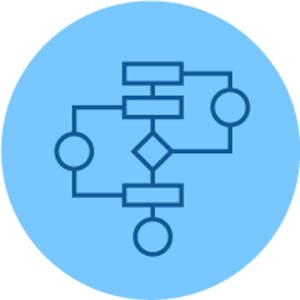C++: Linear Data Structures and Trees
About this Course
Code and run your first C++ program about data structures and algorithms in minutes without installing anything! This course is designed for learners familiar with C++ basics and object-oriented programming. It provides a solid foundation of not just C++, but core data structures and algorithms topics that can be transferred to other languages. The modules in this course cover linear data structures like lists (singly linked, doubly linked, circular), stacks, queues, and introduces the first non-linear data structure trees. To allow for a truly hands-on, self-paced learning experience, this course is video-free. Assignments contain short explanations with images and runnable code examples with suggested edits to explore code examples further, building a deeper understanding by doing. You\'ll benefit from instant feedback from a variety of assessment items along the way, gently progressing from quick understanding checks (multiple choice, fill in the blank, and un-scrambling code blocks) to small, approachable coding exercises that take minutes instead of hours.Created by: Codio

Related Online Courses
This specialization offers the latest developments in blockchain technology through a highly engaging learning experience with animated video components and intuitive course flow to maximize your... more
Dive into Rust programming with our course designed to take you from beginner to expert. Start with an introduction to Rust and setting up your development environment, then quickly move on to... more
This is a self-paced lab that takes place in the Google Cloud console. In this lab start with the Flutter template and walk through the environment. Understand the basic template and use hot reload... more
How much can we know of the physical world? Can we know everything? Or are there fundamental limits to how much we can explain? If there are limits, to what extent can we explain the nature of... more
Informatics research often requires multidisciplinary teams. This requires more flexibility to communicate with team members with distinct backgrounds. Furthermore, team members often have... more








